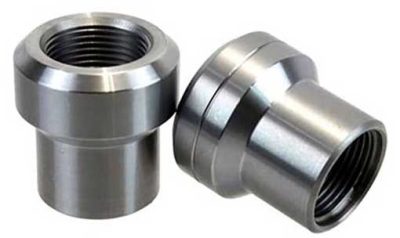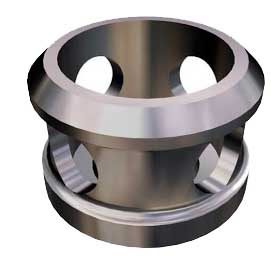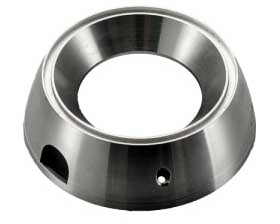Product Categories
Product Tags
Machining technology of titanium alloy parts
Turned titanium alloy parts products can easily obtain better surface roughness, work hardening is not serious, but the cutting temperature is high, and the tool wears quickly. In response to these characteristics, the following measures are mainly adopted in terms of tools and cutting parameters:
Turning tool materials: YG6, YG8, YG10HT are selected according to the existing conditions of the factory.
Geometric parameters of turning tools: suitable front and rear angles of the tool, and tool tip rounding.
Turning of titanium alloy parts
Turned titanium alloy parts products can easily obtain better surface roughness, work hardening is not serious, but the cutting temperature is high, and the tool wears quickly. In response to these characteristics, the following measures are mainly adopted in terms of tools and cutting parameters:
Turning tool materials: YG6, YG8, YG10HT are selected according to the existing conditions of the factory.
Geometric parameters of turning tools: suitable front and rear angles of the tool, and tool tip rounding.
Lower cutting speed, moderate feed rate, deeper cutting depth, and sufficient cooling. When turning the outer circle, the tool tip cannot be higher than the center of the workpiece, otherwise the tool will break. When precision turning and turning thin-walled titanium parts, the cutting tool's entering angle should be large, generally 75-90 degrees.
Milling of titanium alloy parts
Milling of titanium alloy parts is more difficult than turning. Because milling is an intermittent cutting, and titanium chips are easy to bond with the cutting edge. When the sticky chip cuts into the workpiece again, the sticky chip hits a small piece of the tool to form a chipping edge, which greatly reduces the durability of the tool.
Titanium alloy milling method: generally use down milling.
Tool for milling titanium alloy: high-speed steel M42.
Generally, down milling is not used for processing titanium alloys. Due to the influence of the open space of the screw and nut of the machine tool, the milling cutter acts on the workpiece during down milling. The component force in the feed direction of the part is the same as the feed direction of the tool, which is easy to cause the work table to move freely and form a broken tool.
Titanium alloy parts tapping
For the tapping of titanium alloy parts processing products, due to the small chips, it is easy to bond with the blade and the workpiece, resulting in a large surface roughness and large torque. When tapping taps and improper selection of improper operation can easily form a work-hardened, low processing power and when there is the phenomenon of broken taps.
It is necessary to prefer a threaded tapping tap with a proper thread, and the number of teeth should be less than the standard tap, generally 2 to 3 teeth. The cutting taper angle should be large, and the taper part is generally 3 to 4 thread lengths. In order to facilitate chip removal, a negative inclination angle can also be ground on the cutting cone. Try to choose short taps to add rigidity to the taps. The inverted taper part of the tap should be appropriately enlarged compared to the specification to reduce the conflict between the tap and the workpiece.

Turning of titanium alloy parts

Milling of titanium alloy parts

Titanium alloy parts tapping
Contact Us
Waiting for your email, we will reply you within 12 hours with valuable information you needed.
 English
English العربية
العربية 中文(漢字)
中文(漢字) Čeština
Čeština Dansk
Dansk Nederlands
Nederlands Suomi
Suomi Français
Français Deutsch
Deutsch Italiano
Italiano 日本語
日本語 ಕನ್ನಡ
ಕನ್ನಡ 한국어
한국어 Português
Português Русский
Русский Slovenčina
Slovenčina Español
Español Svenska
Svenska Türkçe
Türkçe





